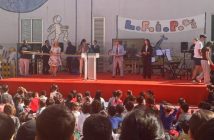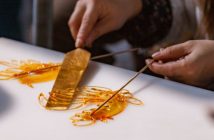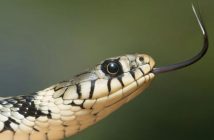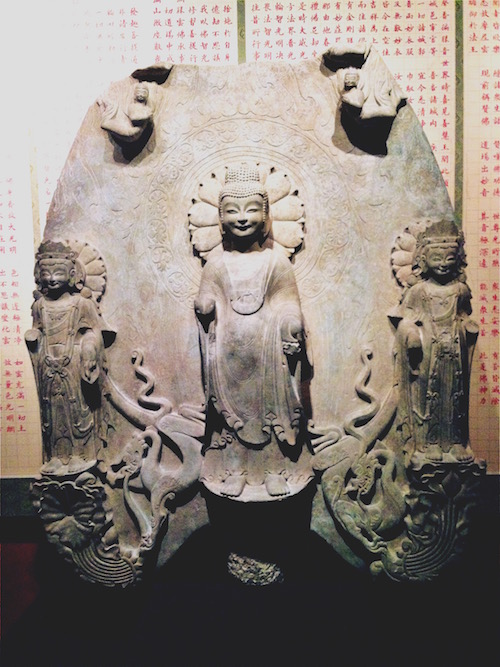
As I prepare to apply to grad school, I’m slowly getting used to the idea that I won’t be in Beijing this time next year. The prospect of leaving brings with it powerfully complicated emotions, but as a freelancer I’m lucky enough to have the time and freedom to bid the city a long goodbye.
With this in mind, I put together a Beijing bucket list with places I always meant to visit but never got around to. These range from the jaw-droppingly obvious (Yiheyuan, Yonghegong) to the obscure (Lao She Memorial Hall), terrifying (winter swim in Houhai), and pointless (loitering by the North Korean Embassy).
That’s the premise that brought me to the Poly Art Museum this weekend. Despite its bizarre location in an office building, I was stunned by the small but exquisite collection of Buddhist stone carvings and Chinese bronzes.

Located on the ninth floor of the imposing New Poly Plaza, the museum is administered by a state-owned enterprise specializing in arts and culture.
Though my boyfriend and I visited on a Saturday, there were only a handful of other people there. We started with the room of Buddhist stone carvings from the Tang, Northern Wei, and Northern Qi dynasties. Most of the pieces weren’t glassed in at all, allowing us to take full advantage of the fact that pictures were allowed.
In between snaps and accidental triggers of the motion sensor alarm, we exclaimed "Wow, look at this one! It’s so well-preserved!" over and over again like twin broken records.
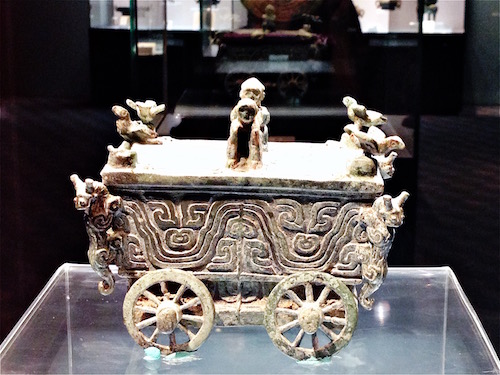
We moved on to the main hall, which housed a show-stopping collection of bells, jars, wine vessels (zun and guang), lamps, and decorative elements from the Shang and Zhou dynasties – widely considered to be the pinnacle of bronze production in ancient China.
Some of the artifacts looked remarkably contemporary, like this rabbit guang that wouldn’t seem out of place at a twee lifestyle boutique in Gulou:


Others were downright silly:
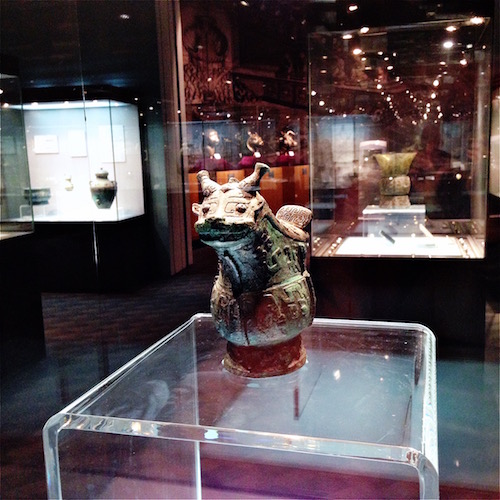
And others puzzling (is that a moose Shrek with hands for antlers?):

There were many animal motifs as well as taotie, an animal-like mask with protruding eyes and without a lower jaw whose significance in Shang ritual bronzes is still debated by scholars.
The real centerpiece of the collection, however, was in a room to the right of the main hall:




These are four of the 12 bronze animal heads looted from the Old Summer Palace by Western forces in 1860. Designed by an Italian Jesuit for the Qianlong Emperor, the heads once stood around a fountain and spewed water.
Two years ago, one of France’s richest men acquired two more – the rabbit and the rat – and pledged to return them to China (VPN required), but no sign of them yet. The location of the rest are unknown.
"Sounds like the premise of a Jackie Chan movie," I quipped. My boyfriend whipped out his phone; a quick Google search revealed that, sure enough, there is already such a thing.
CZ12 is a 2012 Hong Kong action film starring Jackie Chan as a mercenary tasked with recovering the 12 animal heads. The movie culminates with an evil corporation that threatens to throw the valuable dragon head into an active volcano if no bids are received for it by noon on a specific day, causing Jackie Chan to sacrifice himself for its safe return to China. Seriously.
However, the animal heads currently on display at the Poly Art Museum are reproductions. An employee explained that the artifacts are often on loan to other institutions; she estimated the originals will be back in Beijing around Spring Festival.
All in all, the Poly Art Museum was a surprisingly pleasant way to spend 45 minutes to an hour. The premises were clean and well-lit with useful supporting materials such as diagrams showing cross-sections of ritual bronze vessels and clear impressions of faded designs in stone carvings. There’s a bathroom on the same floor just outside the museum.
I would opt to take visitors with limited time or a passing interest in Chinese art and culture here over a larger museum. At only RMB 20, admission is a steal.
More pictures:
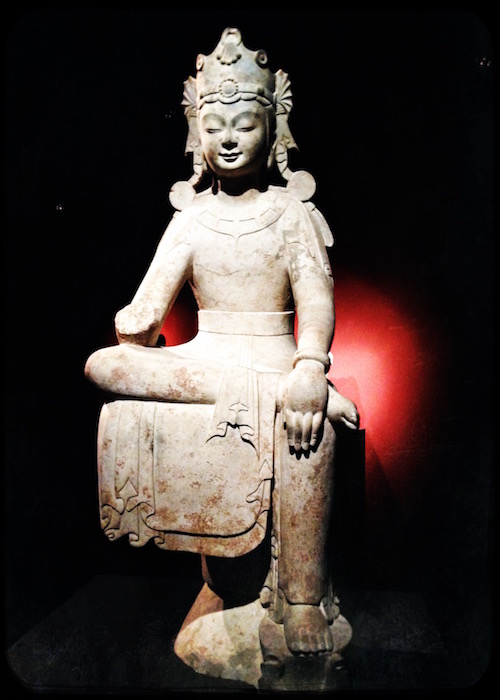


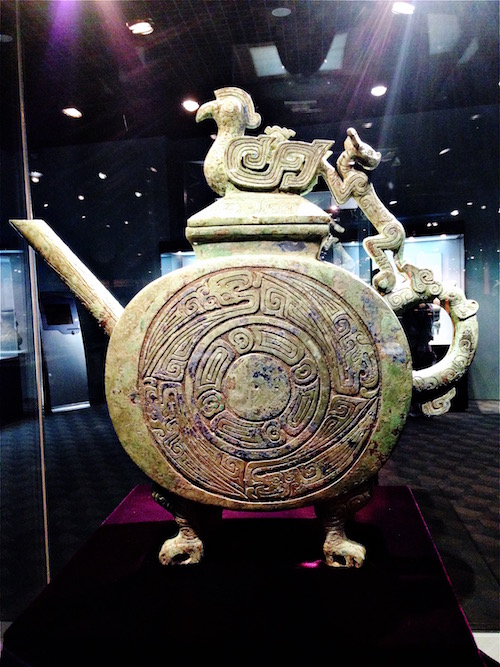



Poly Art Museum 保利艺术博物馆
New Poly Plaza is located on the southwest corner of Dongsishitiao Bridge. There are two entrances: one on the north side of the building and one on the south side. If one is locked, head to the other. Tell the front desk you’re going to the museum and buy your ticket there, then take the elevator up. Audio guides available in Chinese.
RMB 20. Daily 9.30am-4.30pm. 9/F, New Poly Plaza, Chaoyangmen Beidajie, Dongcheng District (6500 8117) 东城区东城区朝阳门北大街1号新保利大厦9层
Sijia Chen is a contributing editor at beijingkids and a freelance writer specializing in parenting, education, travel, environment, and culture. Her work has appeared in Travel + Leisure, The Independent, Midnight Poutine, Rover Arts, and more. Follow her on Twitter at @sijiawrites or email her at sijiachen@beijing-kids.com.
Photos: Sijia Chen

